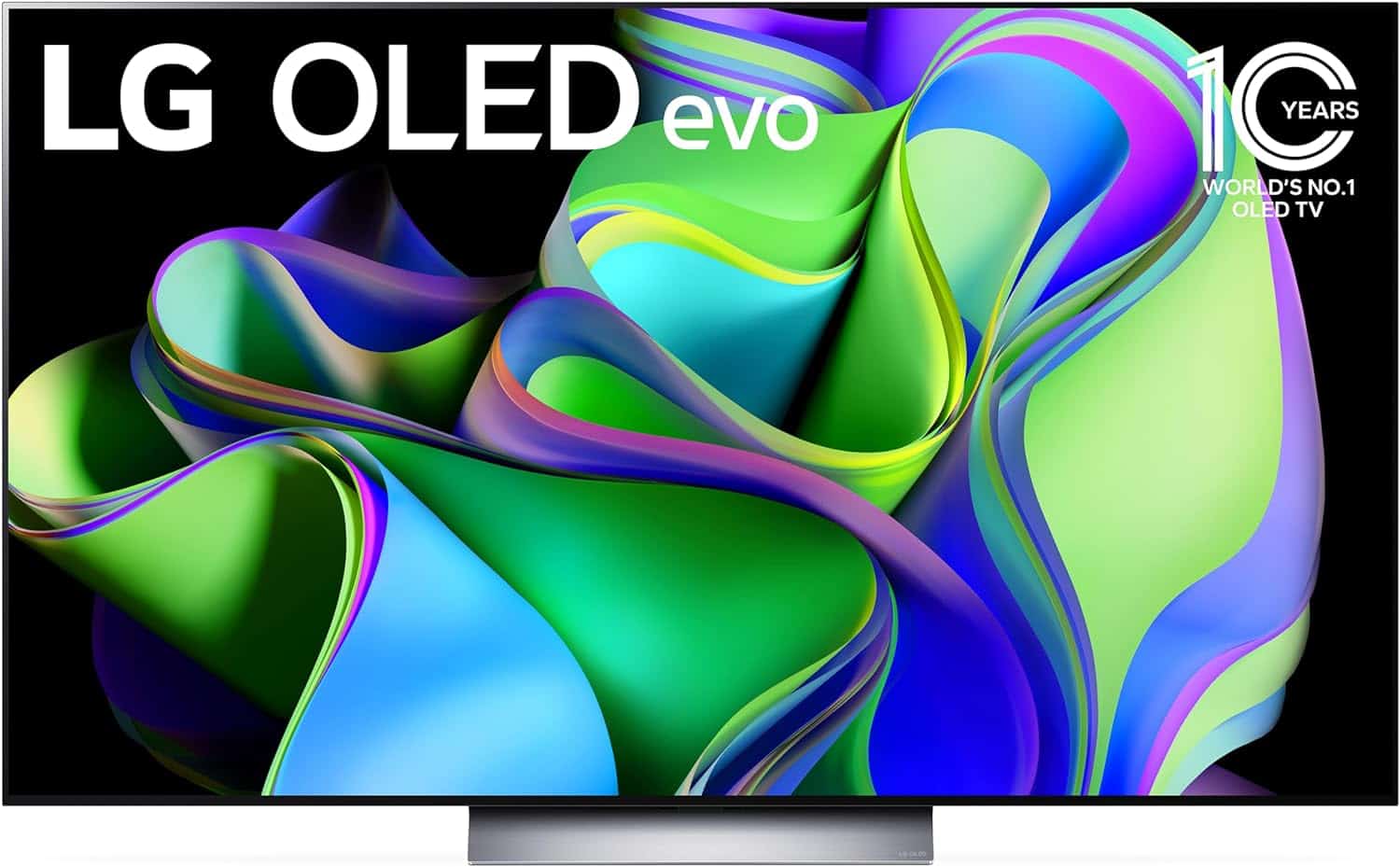LG TVs are known for their beautiful, bright displays, but they may not always give you the picture quality you want right out of the box. While LG TVs generally offer excellent picture quality initially, making a few adjustments to the settings can significantly enhance your viewing experience. Here are some recommendations for achieving the best picture settings on your LG TV: Making a few simple changes to your LG TV picture settings can really make your content stand out!
LG TV Best Picture Settings For Optimized Viewing
By following these guidelines and experimenting with different settings, you can unlock the full potential of your LG TV and enjoy stunning visuals that immerse you in your favorite movies, TV shows, and games.
Picture Mode
The first thing to consider is Picture Mode. This setting provides the baseline for many other settings. Your LG TV might have a lot of modes. Here are some of the most common ones:
- Standard: This is a good all-around setting for most content.
- Vivid: Pumps up the color and brightness – great for brightly lit rooms but the picture may not look natural.
- Cinema: Designed for watching movies in a dim or dark room. This mode will have the most accurate color.
- Sports: Boosts the motion detail so fast action looks smooth.
- Game: Reduces input lag at the cost of some picture quality.

- Picture Mode: Start by selecting the appropriate picture mode based on your viewing environment and content.
- For bright rooms: Use “Vivid” or “Standard” mode.
- For dark rooms: Opt for “Cinema” or “Movie” mode.
- For HDR content: Choose “HDR Cinema” or “HDR Effect” mode.
- Aspect Ratio: Set this to “16:9” for most content or “Original” to preserve the original aspect ratio of the source material.
- Energy Saving: Turn this off to avoid any automatic dimming that might affect picture quality.
Advanced Settings
- Backlight: Adjust this to your desired brightness level. In general, lower backlight levels are better for dark rooms, while higher levels are suitable for bright rooms.
- Contrast: Controls the difference between the brightest and darkest parts of the image. Set this to a level that provides good detail in both highlights and shadows.
- Brightness: Adjusts the overall luminance of the image. Start with a setting around 50 and fine-tune it based on your preference.
- Sharpness: Controls the edge definition of the image. Avoid setting this too high, as it can introduce artificial sharpness and noise.
- Color: Adjusts the color saturation. Set it to a level that looks natural and pleasing to your eyes.
- Tint: Controls the color balance between green and red. It’s usually best to leave this at 0 unless you notice a color cast in the image.
Brightness (OLED Light)
Not every LG TV has a brightness control, but for those that do it determines how bright the TV’s screen is. In a dark room you probably don’t want this set very high. In a very well-lit room you may need to adjust it in order to see the picture. Some LG OLEDs have a setting called “OLED Light” instead of brightness.
Backlight
This setting affects the brightness of a traditional LED screen. If your LG TV has an LED display you’ll likely have this setting. Like Brightness, you’ll want to turn this down in a dark room. Some OLED TVs have a backlight setting even though they don’t technically have a backlight. This setting works much the same way.
Contrast
Contrast determines the balance between the brightest part of the screen and the darkest part. A higher contrast picture will usually have better detail. But, turn it up too high and you’ll lose detail in shadows and bright areas. You might want to change this setting based on what you’re watching. Most content will look best with contrast in the 80-90 range.
Sharpness
It might seem like more sharpness is better, but usually that isn’t the case. Turning up sharpness adds a digital effect called “edge enhancement.” This can make the picture look unnatural with artificial halos around edges. Leave sharpness set at 0, or very low, for the best picture.
Color and Tint
Color adjusts the color saturation of your picture. Tint affects the balance between red and green in the picture. Most of the time these settings will be close to right out of the box. If you aren’t happy with the way colors appear on your LG TV, you may want to experiment with these settings. A good tool to help set these correctly is available on AVSForum.
Expert Controls (Optional)
- Dynamic Contrast & Color: These settings can enhance contrast and color but might introduce some artifacts or unnaturalness. Experiment to see if you like the effect.
- Color Gamut: For most content, “Normal” is a good choice. For HDR content, switch to “Wide” to take advantage of the expanded color range.
- Gamma: Adjusts the overall brightness curve of the image. A setting of 2.2 is generally recommended for most viewing conditions.
- White Balance: Fine-tune the color temperature of the image. “Warm” is often preferred for movies and TV shows, while “Cool” might be better for sports and gaming.
Additional Tips
- Turn off Motion Smoothing (TruMotion): This feature can create a “soap opera effect” that makes movies and TV shows look unnatural. It’s generally best to turn it off.
- Calibrate Your TV: For the most accurate picture settings, consider having your TV professionally calibrated.
- Experiment: Don’t be afraid to experiment with different settings to find what looks best to you.
Remember:
- The optimal picture settings may vary depending on your specific LG TV model, the content you’re watching, and your personal preferences.
- It’s a good idea to create separate picture profiles for different viewing scenarios (e.g., one for movies, one for sports, etc.) to easily switch between them.
Settings Recommendations
There are a lot of other settings in your LG TV’s picture menu. Here’s a breakdown of some of the most useful ones.
| Setting | What it Does | Recommended Setting |
|---|---|---|
| Color Temperature | Makes the picture look warmer (more red/orange) or cooler (more blue). | Warm or Medium |
| Dynamic Contrast | Dynamically adjusts contrast. | Off |
| Gamma | Adjusts the brightness of midtones. | 2.2 |
| Noise Reduction | Smoothes out compression artifacts and grainy images. | Low or off |
Play with the settings and see what looks best to your eyes!
Understanding LG TV Picture Settings
Navigating the world of LG TV settings can significantly enhance your viewing experience. Let’s clear up what each setting does.
An Overview of Picture Modes
LG TVs offer a variety of picture modes, each tailored for different viewing environments and content types. They range from the vivid brightness of the Standard mode to the more balanced colors and contrast of the Cinema mode, which is great for watching movies in a dark room. The HDR Effect mode boosts the quality of standard dynamic range content, and Vivid mode ramps up brightness and color saturation to pop off the screen.
Adjusting Brightness and Contrast
Brightness determines how light or dark the screen is. It’s best set to match the lighting in the room – not too bright to cause eye strain, nor too dark to lose detail. Contrast controls the difference between the brightest whites and the darkest blacks. Adjusting contrast can help differentiate subtle shades and prevent images from looking washed out.
Color Settings and Temperature
The color setting affects saturation and vibrancy. For a natural look, avoid pushing this too high. Tint adjusts the balance between red and green, and should typically remain at the default unless the colors seem off-balance. Color temperature changes the “warmth” of the picture; warmer settings give a golden hue, while cooler settings are bluish.
Clarity: Sharpness, Super Resolution, and TruMotion
Sharpness makes edges more distinct. However, too high a sharpness can introduce unwanted noise. Super Resolution enhances detail in lower quality sources. LG’s TruMotion feature smooths out motion, which can be ideal for sports but may create an unnatural “soap opera effect” in movies and TV shows.
OLED Light and Gamma Settings
For LG OLED TVs, OLED Light controls the brightness of the pixels themselves and can be tweaked to your viewing comfort. The Gamma setting adjusts the overall brightness curve of the screen, influencing how light or dark mid-tone colors appear. This setting can fine-tune the picture to look more true-to-life.
Optimal Picture Settings for Various Content
Different content types on your LG TV shine brightest with specific picture settings. From the deep shadows in movies to the bright, fast-paced action of sports, each requires a tailored approach for the best visual experience.
Movies and Filmmaker Mode
For movie enthusiasts, achieving that cinematic look is essential. Filmmaker Mode disables post-processing and preserves correct aspect ratios, colors, and frame rates, offering an authentic experience as intended by the director. For optimal settings, turn on Filmmaker Mode and ensure your TV’s HDR effect is active to enhance contrast and detail in films and TV shows.
Sports and Fast-Moving Content
When watching sports, clarity and motion are key. Activate the Sports Mode to enhance color and contrast while enjoying a crisp, clear picture. The dreaded “soap opera effect” can be a nuisance; hence, dynamic tone mapping should be adjusted to minimize it. This ensures the fast movements in sports or action-packed content are smooth and immersive.
Gaming Enhancements and Game Mode
Gamers need a responsive and vibrant display. Engage Game Mode or Game Optimizer if available, to obtain the lowest input lag. Fine-tune the picture by enhancing brightness and contrast for better visibility. When connected to a game console, these settings help ensure that video games display with rapid response times and vivid colors, making every moment count.
Advanced Picture Settings and Maintenance
Optimizing your LG TV’s picture can make a huge difference in your viewing experience. This section will guide you through complex settings and maintenance tips to keep your TV performing at its best.
Expert Mode and ISF Calibration
LG TVs offer an Expert Mode for those who want precise control over their picture settings. This mode provides options to fine-tune color balance, brightness, and contrast to match professional standards. For an even more accurate setup, ISF calibration is recommended, where a certified professional can calibrate the TV settings to suit the specific lighting conditions of the room.
Energy Saving Features and Eye Comfort
The Energy Saving mode, including the Auto Power Save (APS), can help lower power consumption while adapting the picture brightness to the lighting in the room, which not only saves energy but also helps reduce eye strain. Additionally, LG TVs have settings to minimize blue light exposure, further increasing eye comfort during long viewing sessions.
Software Updates and OLED Panel Care
Regular software updates are vital for maintaining the best performance of your LG TV. They can bring new features and fix issues that could affect your TV’s picture quality. When it comes to OLED panel care, it’s important to follow recommended practices to prevent burn-in. This includes varying what’s on-screen and avoiding static images for extended periods.
Understanding TruMotion (Motion Smoothing)
LG TVs have a feature called TruMotion. It tries to make motion look smoother. But, it can also make movies and TV shows look like soap operas. This is called the “soap opera effect.” Here’s a simple guide to TruMotion:
- Off: This is often the best choice for movies and TV shows. It shows the content as the creators intended.
- Cinema Clear: This setting reduces blur but keeps some of the natural film look.
- Smooth: This makes motion very smooth. It’s good for sports but can make movies look unnatural.
- User: This lets you fine-tune the settings. You can adjust “De-Blur” to reduce blur and “De-Judder” to smooth out motion.
If you see the “soap opera effect,” turn TruMotion off or try the “Cinema Clear” or “User” settings.
More About Calibration
Calibration makes your TV show the most accurate colors and details. You can do it yourself or hire a pro.
DIY Calibration
You can try to calibrate your TV at home. Here are some tips:
- Use Test Patterns: You can find free test patterns online. These patterns help you adjust brightness, contrast, and color.
- Online Guides: Websites like rtings.com and AVSForum have great guides for specific LG TV models.
Professional Calibration
For the best results, you can hire a professional calibrator. They use special tools to get the most accurate picture.
OLED Burn-in: What You Need to Know
OLED TVs can sometimes have a problem called “burn-in.” This is when a faint image stays on the screen. Here’s how to prevent it:
- Use Screen Savers: Turn on your TV’s screen saver.
- Avoid Static Images: Don’t leave logos or other still images on the screen for long periods.
- Pixel Refresher: Your LG OLED TV has a “Pixel Refresher” feature. Use it regularly.
Most modern OLED TVs are designed to avoid burn-in. But, it’s still good to take these precautions.
HDMI Deep Color (Ultra HD Deep Color)
This setting is important for showing HDR content. It sends more color information to your TV. Make sure it’s turned on for both your TV and any devices like Blu-ray players or game consoles.
Power Saving and Your Picture
LG TVs have power-saving modes. These modes can save energy. But, they can also make your picture look worse. They often dim the screen or change the contrast. If you want the best picture, it’s best to turn these modes off.
Recommended Settings (Quick Guide)
Here’s a quick table of settings to get you started:
| Setting | Recommended Value (General) | Notes |
|---|---|---|
| Picture Mode | Cinema (Dark Room) / Standard (Bright Room) | Change based on the room and what you’re watching. |
| Backlight/OLED Light | Adjust to room brightness | Lower in dark rooms, higher in bright rooms. |
| Contrast | 80-90 | Adjust so you can see details in dark and bright areas. |
| Brightness | Around 50 | Change to what looks best to you. |
| Sharpness | 0-10 | Too much makes the picture look fake. |
| Color | Around 50 | Change for natural colors. |
| Tint | 0 | Only change if colors look wrong. |
| Color Temperature | Warm | Often best for movies and TV. |
| TruMotion | Off (or User with custom settings) | Stops the “soap opera effect.” |
| Dynamic Contrast | Off | Can make the picture look strange. |
| Gamma | 2.2 | A good setting for most people. |
These are just starting points. Feel free to play with the settings to find what looks best to you.
Frequently Asked Questions
When tweaking your LG TV’s settings, knowing how to adjust for specific scenarios like sports or gaming can significantly improve your viewing experience. Below are some common questions and straightforward answers to help you get the best out of your LG TV.
What are the ideal picture settings for watching sports on an LG TV?
For sports, a clear picture with smooth motion is key. Set the TV to “Sports” mode, enable “TruMotion,” and adjust the backlight to suit your room’s lighting for a vivid, dynamic picture.
How do I optimize my LG TV settings for gaming visuals?
In gaming, low input lag and crisp graphics are crucial. Switch to “Game Mode” and disable any unnecessary image processing to minimize lag. Adjust the sharpness and contrast settings for a clearer image that makes gameplay immersive.
What steps should I follow to calibrate my LG 4K TV for the best picture quality?
Calibration involves a few steps: first, choose the “ISF Expert” picture mode. Adjust the brightness and contrast sliders for your lighting conditions. Consider professional calibration tools for a more accurate setup or follow step-by-step guides if you’re doing it yourself.
What’s the recommended way to adjust LG TV color settings for older models?
On older LG TVs, navigate to the picture menu and select “Color.” From here, you can adjust the “Color Temperature” to warm or cool the image. Reducing saturation can also help if colors look overly vibrant.
How can I enhance the resolution for clearer images on my LG TV?
For enhanced resolution, ensure your LG TV is receiving high-definition or 4K signals. Use the “Sharpness” setting judiciously—too high can introduce noise, while too low will blur detail.
What does the LG HDR effect picture mode do and when should I use it?
The HDR effect mode heightens contrast and color to simulate HDR quality on content that is not natively HDR. Use it sparingly, as it can sometimes lead to unnatural skin tones or exaggerated brightness.







